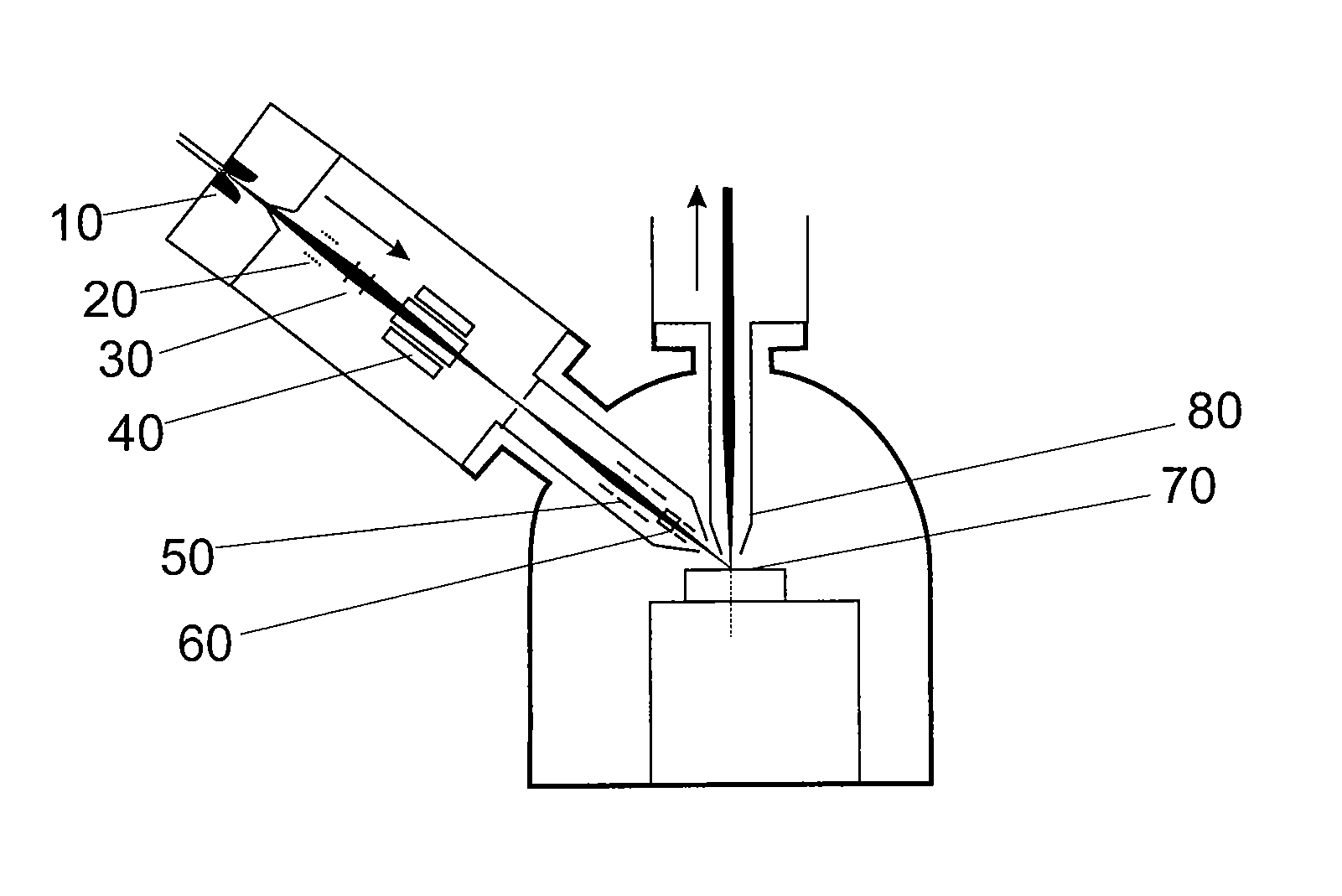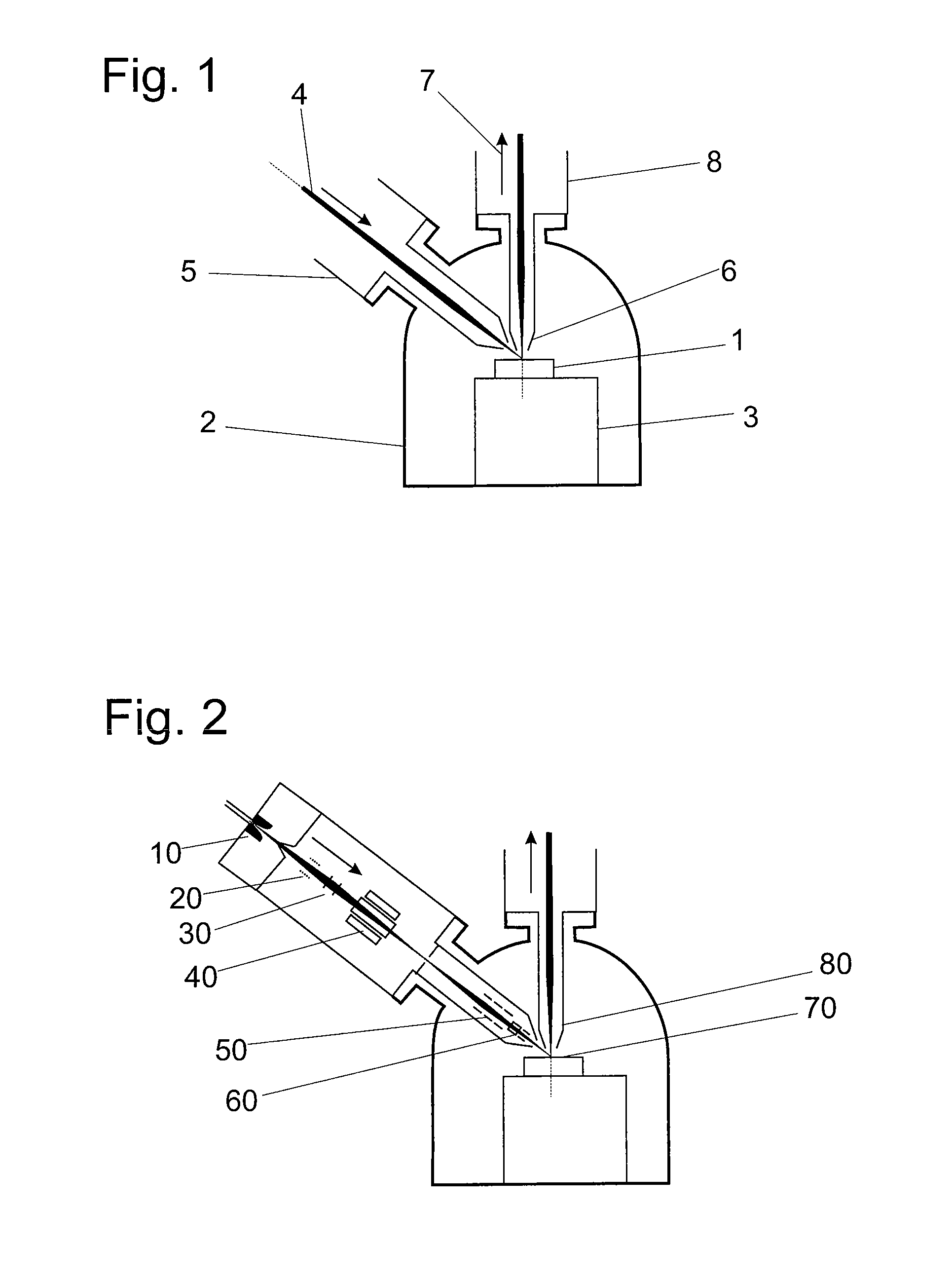Apparatus and method relating to an improved mass spectrometer
a mass spectrometer and mass spectrometer technology, applied in the direction of electrical apparatus, isotope separation, particle separator tubes, etc., can solve the problems of not fully realised potential, too much damage at the sample surface, too much fragmentation of emitted materials to produce large molecular secondary ions, etc., to achieve the effect of enhancing the chemical information obtained and yielding more molecular secondary ions
- Summary
- Abstract
- Description
- Claims
- Application Information
AI Technical Summary
Benefits of technology
Problems solved by technology
Method used
Image
Examples
Embodiment Construction
[0060]Aspects of the present disclosure relate to a water cluster primary ion beam which can be used to irradiate a sample. The water clusters in this beam fall into a size range between 1 and 10000 water molecules per cluster ((H2O)1 and (H2O)10000), with the most useful range generally between (H2O)100 and (H2O)2000. It should be noted that this size range is well below the water droplet size range normally produced by an electrospray source. This is important in the SIMS application as larger clusters or droplets cause undue wetting of the sample surface or frosting in the case of cold samples. Samples are frequently cooled to near liquid nitrogen temperature in organic analysis. We have demonstrated advantages for use of this ion beam with organic samples, including samples of lipids, amino acids and peptides. We expect the increased ion yields to be also observed with cell and tissue samples, including frozen ones, polymers and inorganic samples. The water clusters, generated b...
PUM
 Login to View More
Login to View More Abstract
Description
Claims
Application Information
 Login to View More
Login to View More - R&D
- Intellectual Property
- Life Sciences
- Materials
- Tech Scout
- Unparalleled Data Quality
- Higher Quality Content
- 60% Fewer Hallucinations
Browse by: Latest US Patents, China's latest patents, Technical Efficacy Thesaurus, Application Domain, Technology Topic, Popular Technical Reports.
© 2025 PatSnap. All rights reserved.Legal|Privacy policy|Modern Slavery Act Transparency Statement|Sitemap|About US| Contact US: help@patsnap.com



